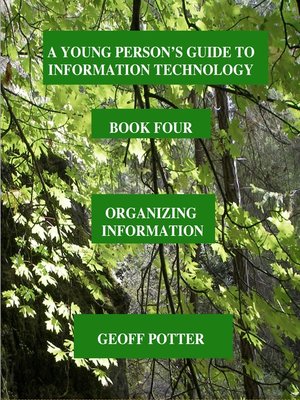
Sign up to save your library
With an OverDrive account, you can save your favorite libraries for at-a-glance information about availability. Find out more about OverDrive accounts.
Find this title in Libby, the library reading app by OverDrive.



Search for a digital library with this title
Title found at these libraries:
| Library Name | Distance |
|---|---|
| Loading... |
This is the fourth book in a series of ten electronic books designed to educate young children and school-age students about information technologies and the digital world they live in.
Who will benefit from this book?
This book is most suitable for young people in their fourth or fifth grade level at school.
For students with little or no prior knowledge of ICT and computing, it is effective when used in conjunction with Books Two and Three.
It may also be helpful for teachers introducing ICT or integrating it into the curriculum.
Contents:
Book Four comprises five modules:
Module 1: Understanding My Computer and My Cellphone
The theme of this module is learning how to use a computer and a cellphone efficiently. This includes understanding how they are designed, how hardware and software interact, and the role of an operating system. Students also learn how to make constructive use of a computer in creating personal projects.
Unit One: How Does a Cellphone work?
Unit Two: How Does My Computer Work?
Unit Three: What is an Operating System?
Unit Four: Working with Documents
Unit Five: Working with Graphics
Unit Six: Annoying Things About My Computer
Module 2: Organizing And Presenting Ideas
The theme of this module is the manipulation of information: searching, working with databases and spreadsheets, and using LOGO to communicate.
Unit One: How Do We Search For Information?
Unit Two: How Do We Change Information?
Unit Three: Let's Present Ideas
Module 3: Sorting And Classifying Information
This module focuses on helping students to classify information. The goal is that students will understand that effective communication is based upon accurate organization of information; and that this requires knowledge of how to create classifications and categories.
Unit One: Let's Discover How To Sort Information
Unit Two: Let's Discover How To Classify Information
Unit Three: Let's Discover How To Group Information
Unit Four: Let's Discover How To Search, Group and Classify
Module 4: Organizing Data
This module guides students through the processes involved in storing and retrieving data and developing thinking skills related to the creation of information sets and patterns.
Unit One: Storing and Sharing Text and Pictures on a Cellphone or a Tablet
Unit Two: Storing and Retrieving Information
Unit Three: Developing Our Thinking Skills
Unit Four: Let's Explore Ways To Recognize and Create Patterns
Web Quest: Escape From The Zoo
Module 5: Finding Objects That Respond To Signals
This module introduces young students to signs, signals and programs, moving towards learning about basic programming processes.
Unit One: Let's Find Signs And Signals
Unit Two: Let's Find Sequences
Unit Three: Let's Design The Right Choices
Unit Four: Let's Design And Send Signals
The book is colorful, creative and contains many challenges and activities designed to help young students understand how digital technologies work and how they may efficiently use them to learn and communicate.
The book also contains an integrated Continuous Assessment process which may be of value in some educational environments.
Modules at each level are divided into skills and knowledge-focused units.
At the end of each unit students may assess their skills and knowledge and grade themselves.
There are no tests or examinations in this program.







